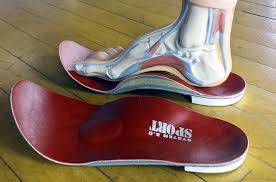One month has passed since 2023! How has your podiatry clinic been performing? Are there any new procedures or equipment that you're thinking of adopting to better serve your patients?
As we begin this new year we'd like to highlight some of the most innovative new technologies that we have seen in the world of custom braces and orthotics industry. The new orthotic solutions available to podiatrists can aid in prescribing orthotics with ease or provide greater results.New iPhone 3D Scanning
There's a brand new 3D scanner available and you could already carry one in your wallet! In the past few years, there's been an explosion of technology that recognizes faces. The same technology that is used in unlocking the iPhone can now capture 3D scans of the patient's foot. A "digital cast" is then used to create custom braces and orthotics.Digital casting (3D foot scanning) completely alters the game when casting orthotics. There are many benefits of using digital scans in comparison to traditional foam and plaster impression casting techniques. With greater accuracy, speedier turnaround times, and less chaos, it's no surprise that 90 percent of our Perth podiatry employ foot scanner technology to make orders for orthotics.
The most significant drawback to the current 3D scanners is the requirement to purchase additional hardware. Podiatrists need to buy bulky 3D scanners on computers, or the portable, however expensive Structure scanner accessory for the iPad. Face scanning is a technology that has been developed, there's no requirement for additional equipment. Most recent iPhones or iPad Pro tablets have this feature built-in today.We've recently updated the Forward Motion app to make it compatible to work with Apple TrueDepth camera! It is now available on the entire range of iPhones as well as iPad pros, with facial recognition technology. There is no additional hardware needed. Simply connect either your iPhone or iPadPro (trueDepth required) to scan your feet with and recommend orthotics that are custom-made for you. Download the app from the Store and get in touch with us for any queries.
3D Printing
3D printing has been in use for some time. The primary drawbacks to 3D print orthoses were lengthy manufacturing time, the cost-intensive, and ineffective materials that didn't last for long. While it's not really "new", this orthotic technology has seen several improvements recently.
The latest printing methods, such as laser Sintering and better materials that are less heavy and more durable have enhanced the process of printing orthotics. Big companies such as Hewlett-Packard are making use of industrial 3D printers that can increase production rates.
One benefit that comes with 3D printing is there is no humans are required to create the shells since they are printed directly in the shape of the foot of the patient. If the orthotic can be printed directly, it can eliminate some of the processes involved in manufacturing including milling out the cast for the foot, forming the shell around the positive casting, and then cutting or grinding the orthotic shells. This allows 3D orthotics that print very precisely and also uses less material during the production of.
With recent advancements making 3D orthotics print faster cost-effective and more durable, This technology is fast becoming a viable option. Shortly, this is likely to be the most popular option when it comes to making custom orthotics.
Pressure Mapping Technology
The measurement of pressure on the foot gives important information that can be beneficial to podiatrists when trying to analyze and identify patients. Pressure mats are readily used to measure the pressure in calcaneal rest. However, analyzing pressure throughout the gait cycle can be a difficult task that podiatrists have to face.
There's a new technology for sensors that can be integrated into shoes for patients. The sensors detect the pressure of the plantar area at every phase of gait when a patient walks, and relay the findings. Podiatrists can utilize this data to identify particular areas where they can relieve the foot, or provide additional accommodations to the orthotic.
Initially used by research labs, sensors inside shoes are generally priced at the top of the line. When alternative hardware becomes more affordable, prices are coming down. We believe that this technology will be soon affordable enough to be used for your podiatry practice.
Conclusion
There you go some of the custom orthotic devices to consider incorporating in your practice! They can help you diagnose patients and provide custom orthotics as well as AFO braces. If you know of anything fascinating that isn't listed Please let us know!
We at Forward Motion, we pride that we are on the cutting edge in orthotic technology. Our advanced technology together with our top-quality materials and our customer service team assure you the best possible service. We partner with you to design customized orthotics in Perth that your clients will appreciate. Contact us now to learn more.


No comments yet